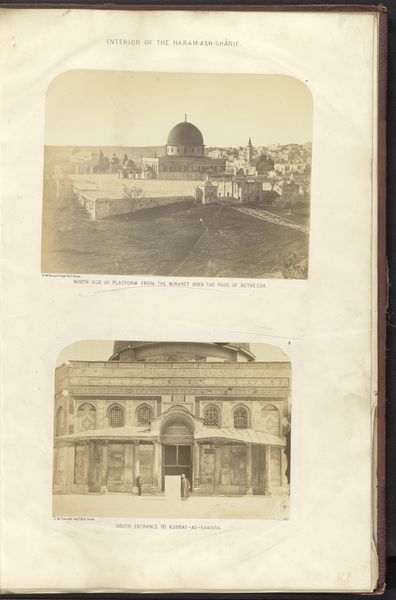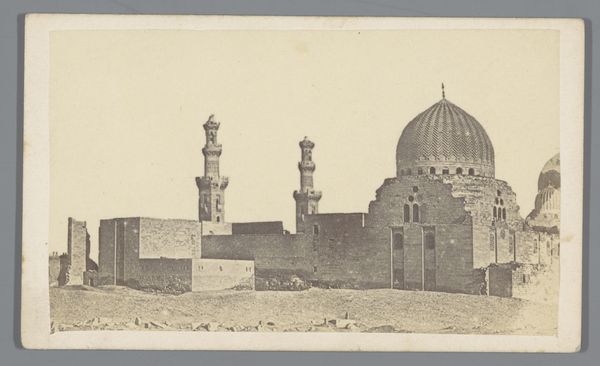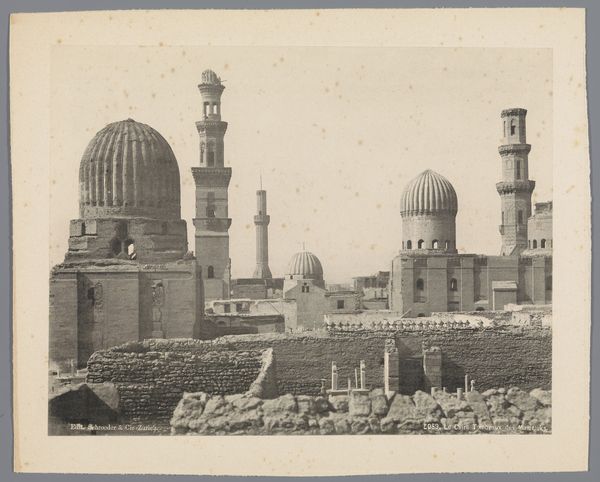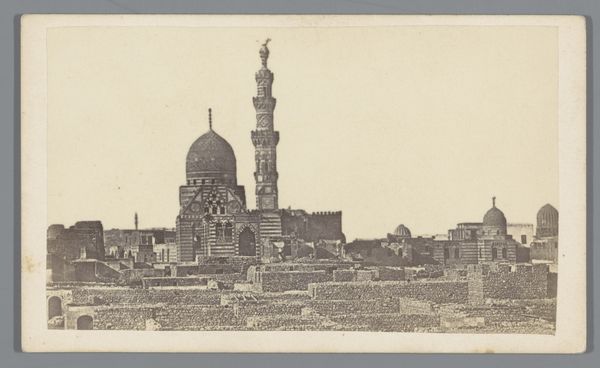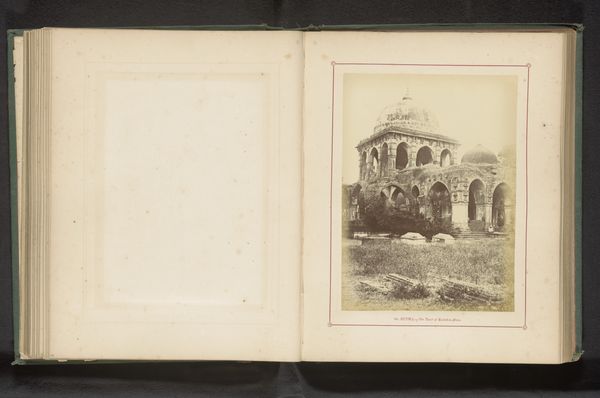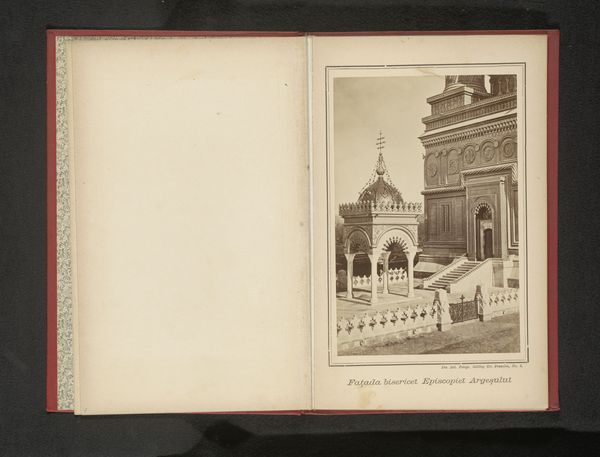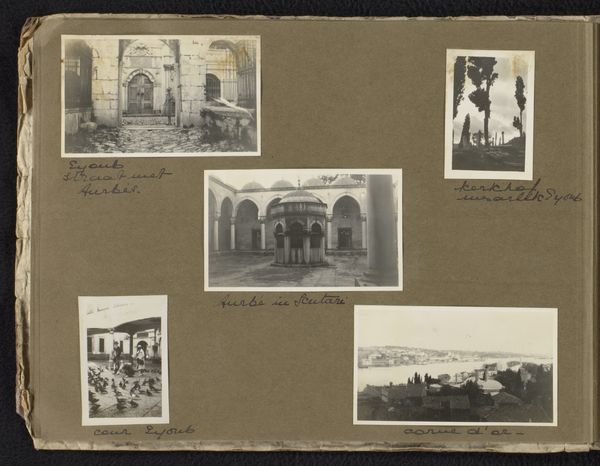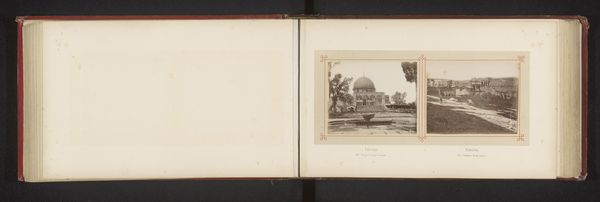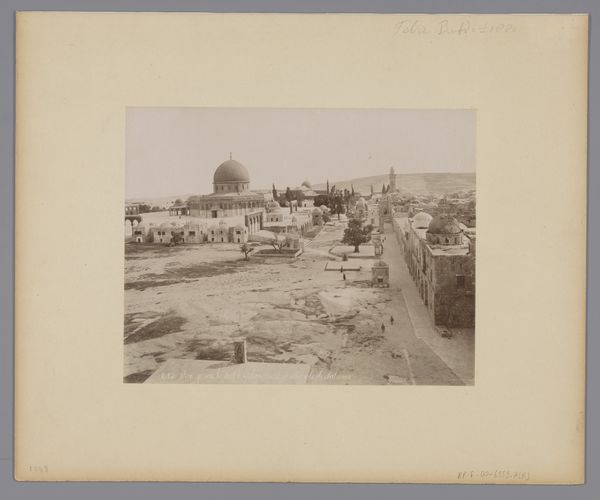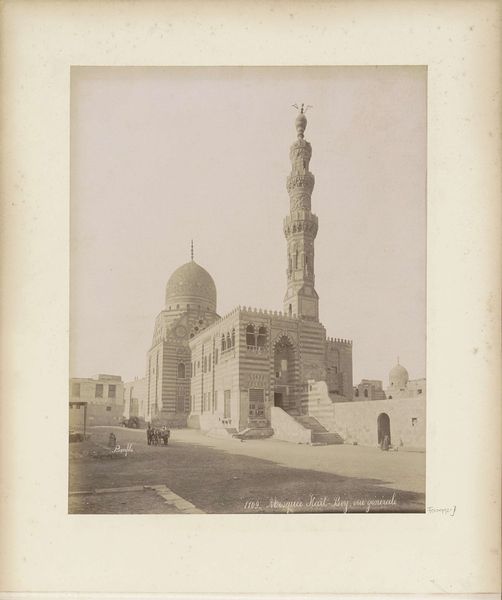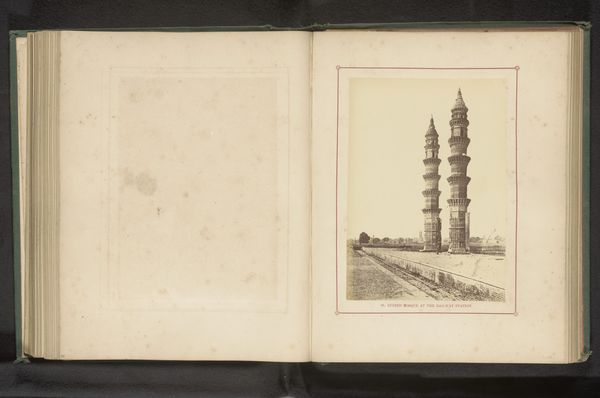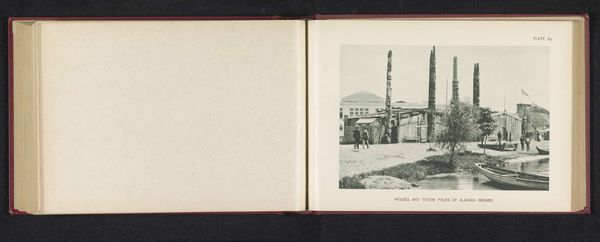
photography, albumen-print
#
landscape
#
photography
#
orientalism
#
cityscape
#
islamic-art
#
albumen-print
Dimensions: height 222 mm, width 280 mm
Copyright: Rijks Museum: Open Domain
Curator: Before us, we have "Tombes van de Kaliefen in Caïro," an albumen print crafted by Maison Bonfils, dating from approximately 1870 to 1898. Editor: My immediate reaction is one of solemn stillness. The sepia tones evoke a bygone era, and the composition, dominated by those imposing architectural forms, communicates a sense of timeless endurance, or perhaps of a glory now past. Curator: Precisely. Consider the visual syntax at play. The horizontal plane is asserted by the landscape, upon which the verticality of the minarets and the rotundity of the domes are boldly contrasted. It is a play of geometric forms meticulously captured through the lens. The very materiality of the albumen print lends the image a subtle textural depth that invites careful study. Editor: And what do those shapes evoke? Domes and minarets—powerful symbols of Islamic faith and authority. They speak of devotion, of cultural richness, but also of empires and legacies. There's a story etched in every surface. Curator: One cannot ignore how Bonfils has arranged elements in space. Look at the light and shadow; how the sun falls upon these surfaces and carves out geometric shapes and textures, informing our understanding of the composition. It provides contrast. Editor: Yes, the dance between light and shadow underscores the emotional weight. Shadow, in iconography, can represent the unknown, the hidden aspects of faith. In Islam, light itself is a profound symbol of the divine. Notice the tiny figures near the bottom left—are they worshipping, or simply existing within this powerful historical landscape? Curator: I'm intrigued by the albumen print itself. That particular photographic process has the intrinsic ability to capture light and tonal range quite exquisitely. Bonfils utilized this quality to showcase the inherent architectural and aesthetic beauty. Editor: The repetitive nature of the domes—the pattern of the forms is particularly engaging when you contemplate the wider symbolism. Such repetition acts as a kind of visual mantra. It can draw one in, creating an echo of reverence across time and cultures. Curator: In examining the artistic composition of the photograph, the juxtaposition of light, shadow, and geometry provides a visual experience in totality. Editor: I find myself wondering about those buried in those tombs and the echoes of their lives and beliefs— captured, preserved in a photograph. An echo for years to come.
Comments
No comments
Be the first to comment and join the conversation on the ultimate creative platform.
